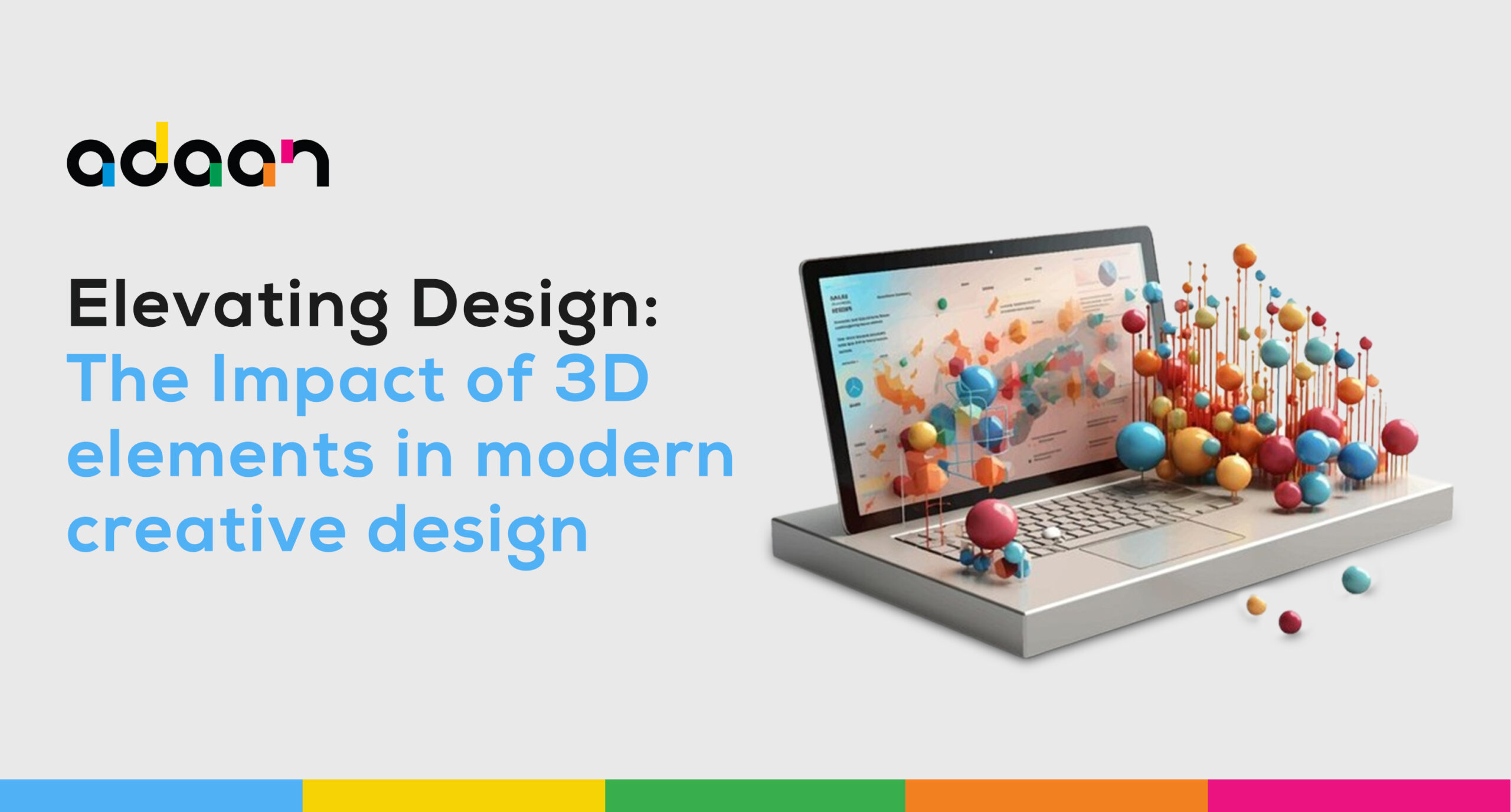The landscape of design is undergoing a revolution fueled by the captivating potential of 3D elements. Gone are the days of flat visuals and predictable patterns; a universe of possibilities now unfolds where creativity paints with depth and innovation. This isn’t simply a cosmetic makeover – it’s a fundamental shift in how we visualize and tell stories, leaving a lasting impact on both designers and audiences.
From immersive architectural renderings that transport us to future marvels to interactive product prototypes we can explore with our fingertips, 3D design captivates our senses and fosters emotional connections. It breathes life into ideas, transforming static concepts into tangible experiences that linger long after the initial encounter.
But the impact of 3D design extends far beyond captivating visuals. It empowers designers to engage users in entirely new ways. Interactive websites, augmented reality applications, and dynamic product interfaces – these are just a glimpse into the future where users play an active role in shaping their experience.
This revolution isn’t just about trends; it’s about unlocking the boundless potential of creativity. 3D design fuels fresh inspiration, encouraging designers to push boundaries and redefine storytelling. It empowers them to bring concepts to life in striking ways, leaving an indelible mark on the creative landscape.
The Changing Face of Design Trends
Design trends, like the ebb and flow of tides, are in a perpetual state of evolution. As technology advances, so does the canvas upon which designers paint their visions. The advent of 3D elements has injected fresh vitality into the design industry, steering it away from the familiar and towards the unexplored.
Creative minds thrive on inspiration, and the infusion of 3D elements has ushered in a new era of possibilities. The influences behind contemporary designs are increasingly diverse, drawing inspiration not only from traditional sources but also from the dynamic intersection of technology and art.
The Ascent of 3D Elements
Integration into Contemporary Creative Design
One of the primary drivers of the 3D design revolution is its seamless integration into contemporary creative design. No longer confined to specialized niches, 3D elements have become an integral part of various design genres, from graphic design to product packaging. This integration has democratized access to 3D tools, empowering designers across the spectrum.
Breaking Free from Traditional Design Conventions
The infusion of 3D elements signifies a departure from the constraints of traditional design conventions. It allows designers to transcend the limitations of two-dimensional spaces, opening up a realm where creativity knows no bounds. This departure from convention breathes life into designs, infusing them with a dynamic energy that captivates the audience.
3D Design and Aesthetic Modernization
Blending Technology and Creativity
In the modern landscape, where technology and creativity converge, 3D design stands as a testament to this harmonious blend. The marriage of technology and creativity has birthed a new aesthetic, one that resonates with the contemporary audience. The result is a visual language that communicates ideas with unparalleled depth and richness.
Shaping Visual Experiences in the World of Design
Beyond mere aesthetics, 3D design has the power to shape immersive visual experiences. From architectural renderings that transport viewers into future spaces to virtual product prototypes that invite exploration, the impact of 3D elements extends beyond the screen, resonating with audiences on a visceral level.
Moving Beyond Two Dimensions
Shifting from Flat to Three-Dimensional Design
The shift from flat to three-dimensional design is akin to moving from a static photograph to a captivating movie. 3D elements introduce a dimensionality that goes beyond the surface, inviting viewers to explore and engage with the design on a deeper level. This transition marks a departure from the static nature of two-dimensional designs, embracing a more dynamic and interactive approach.
Engaging the Senses Through Visual Depth
3D design goes beyond the visual sense, engaging the senses in ways previously unexplored. The added dimensionality creates a sense of depth that not only pleases the eyes but also invites tactile exploration. This multisensory engagement establishes a connection between the audience and the design, fostering a more memorable and impactful experience.
Impact on User Engagement
Captivating Audiences with Immersive Designs
The immersive nature of 3D designs has a profound impact on user engagement. Whether navigating a virtual space or interacting with a product model, users are drawn into an experience that transcends the limitations of traditional design. This captivation holds the audience’s attention, fostering a sense of connection that resonates long after the initial interaction.
Enhancing User Interaction Through 3D Elements
User interaction takes center stage in the era of 3D design. The ability to manipulate and engage with 3D elements elevates user experiences, making them more participatory and enjoyable. From interactive websites to augmented reality applications, 3D elements redefine the user journey, turning it into a dynamic conversation between the design and the user.
Unleashing Creative Design Inspiration
Drawing Ideas from 3D Innovations
The introduction of 3D elements has become a wellspring of inspiration for designers. It encourages them to push boundaries, experiment with new concepts, and breathe life into their creations. The three-dimensional canvas unlocks a realm of possibilities, inspiring designers to explore uncharted territories and redefine the very essence of visual storytelling.
Bringing Concepts to Life in Striking Ways
Concepts that once existed solely in the realm of imagination now find tangible expression through 3D design. From conceptualizing architectural marvels to envisioning futuristic product designs, the marriage of creativity and 3D technology brings ideas to life in ways that leave an indelible mark on the creative landscape.
Case Studies: Successful Implementation
Showcasing Outstanding 3D Design Projects
Numerous success stories attest to the transformative power of 3D design. From visually stunning marketing campaigns that capture attention to interactive educational tools that make learning a joy, the impact of 3D elements is evident across diverse projects. These case studies serve as beacons, illuminating the path for others to follow.
Highlighting Positive Branding Outcomes
Beyond aesthetics, the strategic implementation of 3D elements has yielded positive branding outcomes. Brands that embrace the immersive and interactive nature of 3D design find themselves at the forefront of innovation. The positive associations created through these experiences resonate with audiences, contributing to brand loyalty and positive perception.
Future Trends and Innovations
Anticipating the Evolution of 3D Design
As we gaze into the future, the trajectory of 3D design seems poised for continual evolution. Anticipating the next wave of innovations, designers are likely to explore even more groundbreaking applications, pushing the boundaries of what is conceivable. The evolution of 3D design is an ongoing journey, and the destination promises to be as exhilarating as the path itself.
How Today’s Design Trends Shape Tomorrow’s Visual Landscape
The trends of today are the seeds for tomorrow’s visual landscape. The widespread adoption of 3D elements is not merely a fleeting fad but a fundamental shift that will shape the future of design. As designers continue to explore and refine the possibilities inherent in 3D design, they contribute to a visual language that is dynamic, engaging, and ever-evolving.
Summing Up the Impact of 3D Design
In conclusion, the integration of 3D elements in modern creative design marks a pivotal moment in the evolution of visual communication. It transcends the boundaries of traditional design, offering a dynamic canvas where creativity flourishes. The impact is not just aesthetic; it extends to user engagement, inspiration, and the very fabric of design culture.
As we reflect on the impact of 3D design, the call to action is clear: continue exploring. The journey into the realms of 3D creativity is an ongoing exploration, and it is through this exploration that designers will uncover new possibilities, redefine norms, and contribute to the vibrant tapestry of the ever-evolving world of design. Embrace the third dimension, for in it lies the key to unlocking the boundless potential of contemporary creative design.
.






